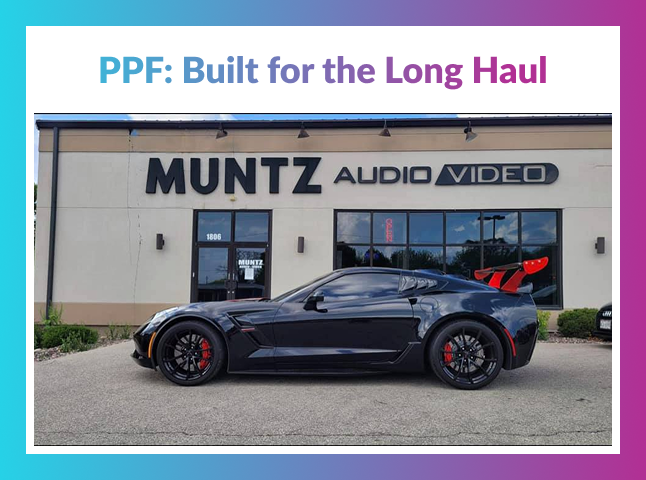
So, you have a paint protection film on your car, sweet. It is one of those intelligent choices that you do not have to shout and yell, but simply gets the job done. Saves your paint from the day-to-day mess: stones, bugs, rough door dings, whatever.
But this is the thing that nobody discusses: what happens after you have had it installed several years ago? Is PPF valid? Or does it begin to look old and faded on the way?
Let?s talk about it, no fluffing, just what to expect as your PPF ages, what affects how long it lasts, and how to make sure it doesn?t call it quits before it should.
?
How Long Does Paint Protection Film Last?
Between 5 to 10 years. The long answer is, of course, it depends. The film's makeup is important, sure, but also where you park, whether you wash your car regularly, what quality roads you drive on, and most of all, how much attention you pay to minor details.
When you have quality film and it has been done right, then no reason it should not last long enough. Although PPF is not invincible. Life takes place, weather does its thing, and time has its way.
What Affects PPF Longevity?
It is not necessarily the big things that ruin your film, sometimes it is the small habits. Driving around, parked in the hot sun day after day, going weeks without washing, sprays and cleaners that are harsher than you can think of. That compounds itself with time.
Naturally, there are random rock chips or scrapes that are just the right path for destruction. This is where the film pays its way. But with too many hits over the years, it starts to come out.
Maintaining PPF for maximum lifespan is easy with a bit of care; the film can keep doing its thing well into year seven, sometimes even longer.
What Happens to That Self-Healing Durability Over Time?
Remember how cool it was when you first saw light scratches disappear with a bit of sun or warm water? That self-healing layer is one of the best parts about modern PPF.
But like anything else, it fades. Around year four or five, you might notice those light marks don?t vanish as easily as they used to. Doesn?t mean the film?s done, just that it?s getting older, like the rest of us. If you?re still seeing solid healing at year six or beyond, you?re either lucky or you've treated your ride like royalty.
What to Watch for as the Years Roll By
You?ll start seeing little signs. Maybe a bit of haze, especially on white paint. A few edges lifting here and there. Some dullness where the film takes the most abuse front bumper, side mirrors, maybe around the door handles.
None of it?s dramatic, especially if you?ve kept the car clean and avoided the aggressive stuff. But it?s there, the PPF version of fine lines and wrinkles.
And that?s normal. Doesn?t mean it?s failing. Just means it?s been out there doing its job.
How to Keep PPF Lifespan Excellent for Long-Term?
Honestly? The best tip for the PPF maintenance is: just don?t beat it up. Wash the car by hand if you can. Use good soap. Dry it properly. If the film gets filthy, clean it; don?t let dirt sit and bake in the sun.
If you?ve got ceramic coating over the film, that helps too. Makes cleaning easier, gives it a bit more life. And every once in a while, have a pro take a look; they?ll catch stuff early that you might miss.
It doesn?t need to be complicated. Just treat it like you want it to last.
Is It Still Worth It Years Later?
Absolutely. Even if the self-healing slows down or a few corners lift, that film has been taking all the damage your paint never had to. It?s the reason your car still looks great from five feet away and close up, too.
And if the film does get too tired? You peel it off, and your paint underneath is still fresh. That?s the whole point.
Conclusion
A properly installed and maintained PPF may give your vehicle solid years of good insurance and satisfaction. It holds the line against all the daily wear and tear your PPF would?ve taken, and when it finally starts to wear out, your paint underneath still looks like new.
This is exactly the whole point. And if you want it clean, with the best material and no shortcuts, that is where Muntz Tintz comes in.our service is not only about making your car look good today, but also after years and years.